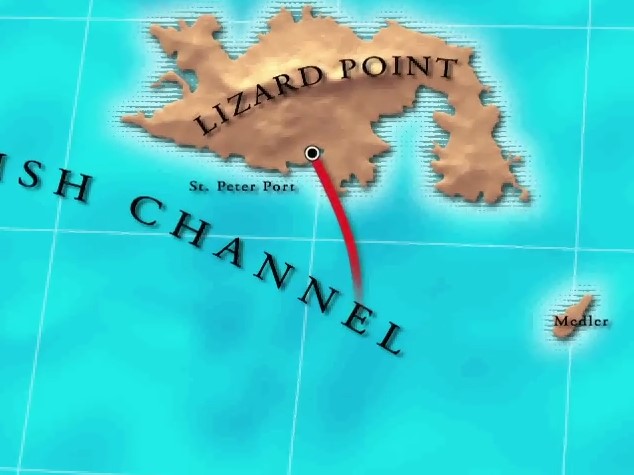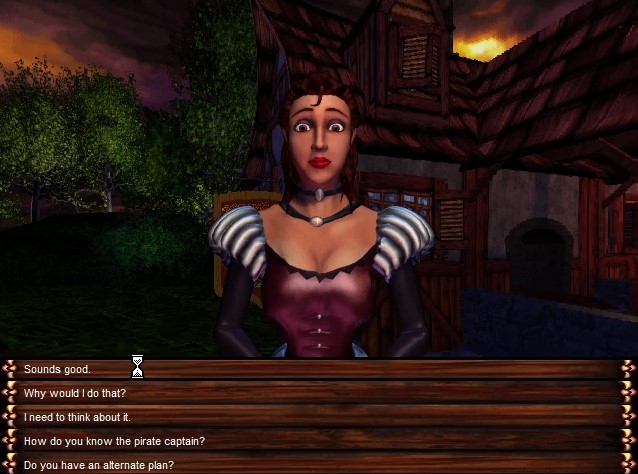CyberFlix. Red Jack: Revenge of the Brethren. THX, 1998. Abandonware.
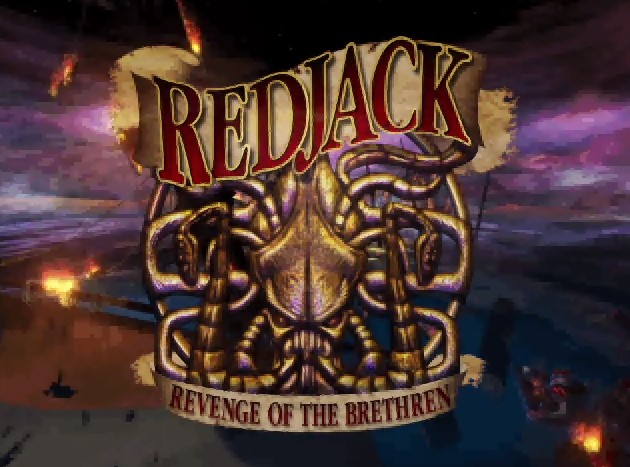
This is a game that requires considerable introduction. Released in 1998, Redjack is the final release of the Knoxville, Tennessee, game company CyberFlix. The company’s games were mostly unremarkable except for one: the 1996 game Titanic: Adventure Out of Time which was released just in time to capitalise on the release of James Cameron’s movie. In 1998, Titanic AOOT remained the sixth highest-selling computer game in the United States, with worldwide sales surpassing 1.5 million copies by fall 2000.1 Redjack: Revenge of the Brethren is CyberFlix’s follow-up to that success. As someone who has spent a considerable amount of time playing the game Titanic AOOT and who has tracked down almost all of CyberFlix’s games and projects, Redjack is interesting to me more because of its modern development history and less because of the history which it depicts.
The game is a simple one: The player is Nick Dove, by all accounts an everyday seventeen-year-old boy who lives in Lizard Point, England,2 in the year 1714. The opening narration, by the clichéd voodoo priestess Azuli, assures us that this otherwise unnoteworthy teen is a hero of destiny, chosen by the pirate Red Jack to discover the traitor that allowed the Spanish navy to sink his vessel after stealing “native” gold from Cartagena. With this news, he is encouraged to go to sea to find his fortune. By coincidence, there happens to be a privateer ship in port, captained by a former Red Jack crewmember, who accepts him after putting him through some tests. All the while, “Janissary” assassins are trying to kill Nick and his new commander Landon Justice, because of course.
The game travels to remarkable places, made unremarkable by the game. Port Royal is small, with only the voodoo priestess’s requisite fortune-telling establishment to briefly visit and a British jail from which to escape. The fortune-teller’s house and the jail are some of the more lushly decorated locations of the game, but because you are not able to interact with any of the décor, these details are difficult to fully appreciate.3 The game’s ship, the Maurauder, provides fewer distractions than that of the vessel in Muppet’s Treasure Island: The Game. Blackbeard’s fortress, a ridiculous wooden barracks with a complete bar, a working lift, and a carnival roller coaster with ensuite mini-canon is barely developed as a location. All one sees of Cartagena is the requisite 1990s sewer.
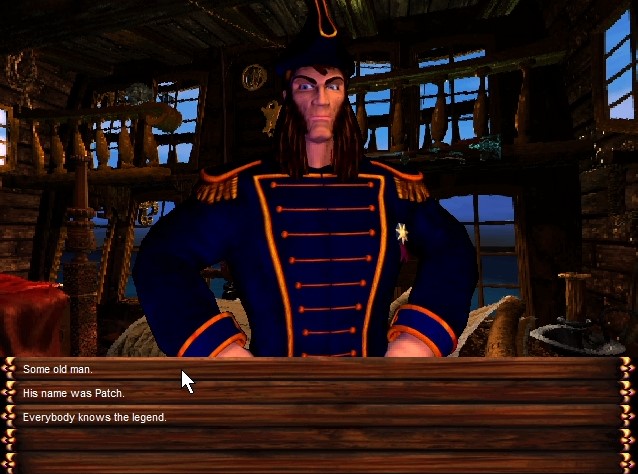
It becomes increasingly clear that this is an unfinished game and I found my interest piqued by trying to deduce that sort of game was originally envisioned—not helped by the very transparent plot. In his article on the company’s failure, Jack Neely learned from the developers that they had originally pitched the game as a musical and this idea was laughed out of testing, which suggests a large amount of work was discarded at some point in the game’s development process. Some characters, like Red Jack and Blackbeard, are highly detailed. The lower arms and hands of male characters look polished, but have clearly been spliced onto every suitable character model, even when the rest of the bodies are boxy, with impossible shoulders or strangely moving anatomy. The lone woman in a dress, Elizabeth, has breasts which are squished each time she moves her elbows. The computer algorithm which aligned the dialog to the talking animation has clearly been inherited from Titanic AOOT but less seamlessly, so that noses twitch while people talk and all the voice acting sounds eerily similar. In Titanic, many of these quirks were charming because the characters were well-written and the ship itself so lovingly reproduced that CyberFlix’s pride remains apparent—faucets, closets, lights, menus, dishes; almost everything can be clicked on and examined.4 But not in Redjack. Despite the ambitious ability to look around in nearly total panoramic freedom, as if Nick Dove is the Google Streets camera, nothing he sees besides actual puzzle objects can be interacted with, and even those are few.5
The game dashes from one plot point to the next, barely pausing, which would be exciting if the plot were complex and the story compelling, but it is neither. During the opening scenes there is at least one character shown with a detailed close-up who is never seen again and another whose presence contradicts the plot.6 Red Jack and Blackbeard look so similar that I thought that the twist would be that they were the same man. Another character appears with no explanation and dies, never to be mentioned again. It never makes sense that Nick’s bully Bone is part of the crew because no one else likes him either, and when Bone eventually becomes the ship captain they all just accept it for no reason except to move along the plot. In a classic example of the Law of Economy of Characters, the villain is the only unseen character in the game repeatedly mentioned by name. His motivations are mundane—professional jealousy—but his actions are extreme. Not only does he murder all of the surviving crew of his old ship’s company, he collects and displays their severed hands in jars. His ironic death, where his own hand is severed as he is drug into the sea by a giant squid, serves as the only explanation for his strange actions. In the end, Nick Dove wins the day, gets the treasure and the girl.
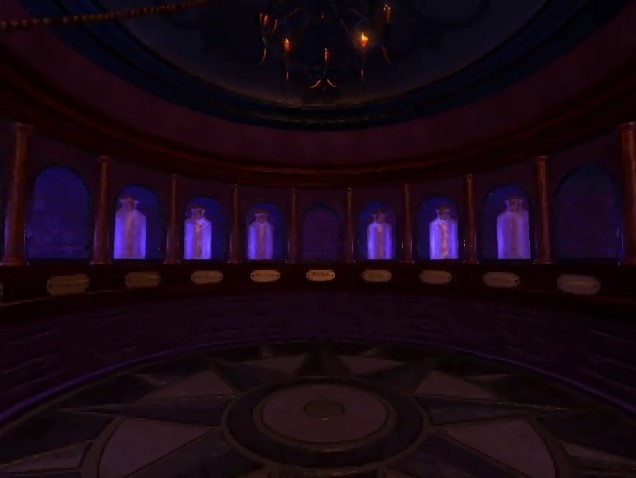
Jars of the severed forearms and hands of Red Jack’s crew. The empty center alcove is for Red Jack’s hand, but the two empty recesses to the left and right suggest that more crew members were going to be included. 
A character from the introduction, shown holding Red Jack as he died. This man never appears in the actual game.
Behind the scenes, the tale is far more interesting. CyberFlix was failing, due in part to an attempt to enter local Knoxville gentrification politics.7 Bill Appleton was convinced that wiring the downtown core of the city, Market Square, with high-speed internet cables would revitalize the area and attract new up-and-coming businesses, specifically tech start-ups usually attracted to Silicon Valley. The move was a failure. In 2004, barely six years after Redjack was released, Frank Cagle wrote in the Knoxville News-Sentinel: “Does anybody remember when Market Square was the new high-tech center of America?”8
But the actual cause of CyberFlix’s failure remains a mystery—probably a combination of mismanagement, Appleton’s own fatigue with running a business, the eclipsing of the Macintosh by Windows, and also the trickiness of distribution.9 As the game met with less than stellar sales10 and the Knoxville city council drug their feet, Appleton himself left town for California. He and lawyer Eric Quist (whose wife Stephanie voices Elizabeth—a lot of Cyberflix’s voice acting was done in-house by the employees and their relations) awarded themselves bonuses worth $1.7 million and $450 thousand respectively and bankrupted CyberFlix, cutting out the other shareholders from receiving a final payout.11 Appleton also took his own proprietary technology DreamFactory with him, which he had clearly marked as the company’s money-maker. The fallout from his flight resulted in a $20 million dollar lawsuit from his former shareholders Scott Scheinbaum and Jamie Wick, alleging that he had cheated them out of five years of dividend payments. The sudden departure also caused the company to rapidly downsize before it utterly collapsed.
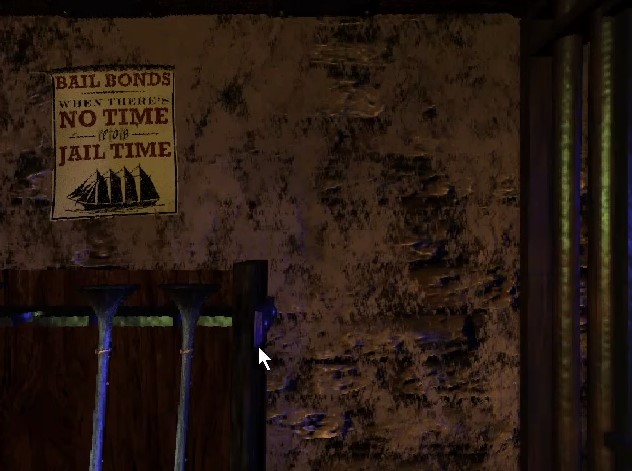
The late nineties were a rough time for companies producing point-and-click adventure games. One of the most well-known of such companies, Lucas Arts, produced the acclaimed classic Grim Fandango, which sold poorly despite being a critical success. Cyan Worlds, producer of the Myst franchise, gave another developer the rights to make Myst III: Exile while they experimented with a new game engine with the intent to convert Myst to a MMO called Uru: Live, cancelled in 2004. These titles competed with the rise of first-person shooters like Half-life and Unreal, both released the same year as Redjack, which capitalised on increasingly affordable and sophisticated graphics cards to infuse the genre with more nuanced storytelling, dynamic and realistic action, and detailed 3D environments. The effect of these more grim and realistic titles is apparent already in the darker tone of Redjack, which features swearing and gore.
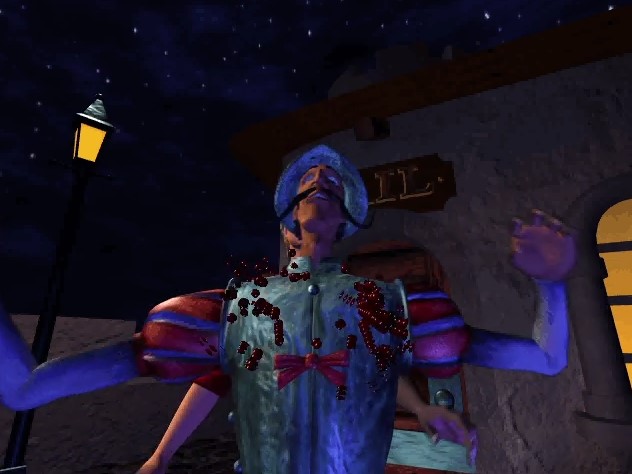
Redjack could not have saved Cyberflix, but the game does provide a snapshot into the final years of a company trying to react to a changing market by releasing a game not quite finished.
Bibliography
Cyberflix. Redjack: The Revenge of the Brethren. THQ, 1998. [Demo available at https://archive.org/details/RedJackDemo].
Cyberflix. Titanic: Adventure Out of Time. GTE Entertainment and Europress, 1996. [Demo available at https://archive.org/details/TITANIC_201604].
Herz, J.C. Joystick Nation: How Videogames Ate Our Quarters, Won Our Hearts, and Rewired Our Minds. Little & Brown, 1997.
The Knoxville News-Sentinel Archive. https://www.knoxnews.com/pages/interactives/archives/.
Neely, Jack. “Game Over: A Lawsuit by Former Employees Brings to Light the Last Days of CyberFlix, the Company of ‘Garage Band Programmers’ that was Supposed to Rule the Video Game World.” The ‘Zine: Metro Pulse Online. October, 1999. https://monkeyfire.com/mpol/dir_zine/dir_1999/942/t_cover.html
“Sale on Titanic and Timelapse.” Inside Mac Games [archive]. October 30, 2000. http://www.insidemacgames.com/news/story.php?ArticleID=1323.
“The Year’s Best-selling Games: List of Winners include Starcraft, Deer Hunter.” ING PC [archive]. January 27, 1999. https://web.archive.org/web/20000613095857/http://pc.ign.com/news/6602.html.
Citations
- ”The Year’s Best-selling Games: List of Winners include Starcraft, Deer Hunter.” ING PC [archive]. January 27, 1999. https://web.archive.org/web/20000613095857/http://pc.ign.com/news/6602.html; and “Sale on Titanic and Timelapse.” Inside Mac Games [archive]. October 30, 2000. http://www.insidemacgames.com/news/story.php?ArticleID=1323.
- A fictional Lizard Point on a large made-up island in the English Channel, not the actual Lizard Point, for reasons.
- The ahistorical posters in the jail advertising such things as “Pirates Anonymous” and “Bail Bonds (When There’s No Time for Jail Time)” were funny, though difficult to read.
- In a chapter of the book Joystick Nation, a Titanic developer remarks, “if you were just tryin’ to half-ass it and get through it, you might make a lamp, but you might not make the electric cord that goes behind the desk.” In J.C. Herz, Joystick Nation: How Videogames Ate Our Quarters, Won Our Hearts, and Rewired Our Minds (Little & Brown, 1997), 93.
- The far more famous point-and-click adventure game series Myst would not produce a game with 360 degree movement until Myst III: Exile was released in 2001.
- I later learned through a throwaway line that the character in the game and the one in the cutscene are identically-dressed father and son, but these characters appear to be evidence of changes to the game’s plot.
- This effort began as early as 1996 according to the Knoxville News-Sentinel archives. Jack Neely notes this included, with the aid of the city, “an attempt to force out do-nothing landlords” as well as “running off the lunchtime street preacher, closing the liquor store, and ceasing weekly meals for the homeless.” See Jack Neely, “Game Over: A Lawsuit by Former Employees Brings to Light the Last Days of CyberFlix, the Company of ‘Garage Band Programmers’ that was Supposed to Rule the Video Game World,” The ‘Zine: Metro Pulse Online, 1999. https://monkeyfire.com/mpol/dir_zine/dir_1999/942/t_cover6.html.
- According to the Knoxville News-Sentinel archives.
- Neely, “Game Over.” https://monkeyfire.com/mpol/dir_zine/dir_1999/942/t_cover3.html;
https://monkeyfire.com/mpol/dir_zine/dir_1999/942/t_cover5.html. - 10,000 copies sold, 1% of Titanic’s sales. Neely, “Game Over.” https://monkeyfire.com/mpol/dir_zine/dir_1999/942/t_cover7.html.
- Jack Neely, “Game Over,” The ‘Zine: Metro Pulse Online, https://monkeyfire.com/mpol/dir_zine/dir_1999/942/t_cover8.html.



